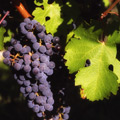1986- Present timeAt the beginning of 1980 and according to the EEC pre-accession measures, the wine sector underwent major organisational change, with the intention of completely fulfilling the rules of the common agricultural policy.
The accession to the EEC, now European Union, brought many changes to Portuguese wine culture, such as different production methods and concerns about quality. Some community funds were spent in modernising wineries and reorganising vines.
Community legislation forced the creation of DOC areas (
Denominação de Origem Controlada – Denomination of Controlled Origin) and qualitative classification of wines using the following categories:
V.Q.P.R.D. (Q.W.P.S.R.),
Vinho Regional (Regional Wine) and
Vinho de Mesa (Table Wine). There was also the creation of
Comissões Vitivinícolas Regionais (free translation: Regional Wine Committees): interprofessional associations based in each DOC region and responsible for applying and regulating the norms applied to the wine sector.
The
Junta Nacional do Vinho (free translation: National Wine Committee) was replaced with the
Instituto da Vinha e do Vinho (IVV [free translation: Vine and Wine Institute]), an organisation that combines the demands of the European market policy. The IVV has defined the national wine maps.

Since 2002, there are 33 Denominations of Controlled Origin.
Although there is a wide range of national grape varieties, some foreign ones have also been introduced in Portuguese plantations. Some of them turned out to be quite successful, as for instance: Chardonnay, Cabernet Sauvignon or Syrah.